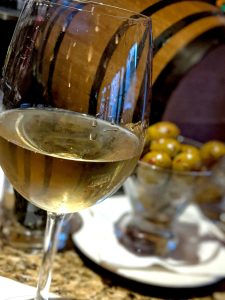
If you’re new to Sherry, then the best advice I can give is to sip with an open mind. Sherry comes in several different styles, but Amontillado is one of the favorites that I love sharing with friends as a transformative wine experience.
Amontillado is a special style of Sherry because it goes through a dual winemaking process: first, through protective biological aging under a layer of yeast called flor; and second, through gentle oxidative aging for an extended period of time. Amontillado’s unique winemaking process brings out a complex range of flavors, from yeast and brioche to walnut, praline, and dried chamomile.
Here’s everything you need to know to get started with Amontillado.
- Where Is Amontillado Made?
- What Grape Is Used in Amontillado?
- A Quick Guide to Sherry Styles
- How Do they Make Amontillado?
- Making a Traditional Amontillado
- How Does Biological Aging Work?
- How Does Oxidative Sherry Aging Work?
- So Why Is Amontillado Special?
- Making a Modern Amontillado
- What’s the Difference Between Amontillado and Fino Sherry?
- What Do You Pair with Amontillado Sherry?
- Thirsty for More?
Where Is Amontillado Made?
Amontillado originally referred to Sherry from the Montilla region of Spain.
Today, Amontillado is a style of Sherry born in Andalucia in southwestern Spain, but not restricted to its historical home of Montilla.
What Grape Is Used in Amontillado?
Here, the hot Mediterranean climate bakes the earth, ripening the white, Palomino grape used in Amontillado Sherry.
Producers use the Palomino grape almost exclusively for Sherry production due to the grape’s relatively neutral flavor profile.
Unlike a boisterous Riesling or a spicey Gewurztraminer, Palomino shows more restraint – dubbed a ‘non-aromatic’ grape.
(Personally, I’ve enjoyed dry white table wines made out of Palomino grapes, and I do think that they have a distinctive profile of white flowers and light lemon, but it’s true that it’s nothing overt or pronounced.
The Palomino’s gentle nature allows the winemaker to coax out a unique range of aromas and flavors from the winemaking process itself.
Think of Palomino as the blank canvas, and the Sherry-making process as the colors added to bring forth a masterpiece.
Every Sherry you sip captures the story of winemaking and the winemaker’s skills at layering in complexity.
A Quick Guide to Sherry Styles
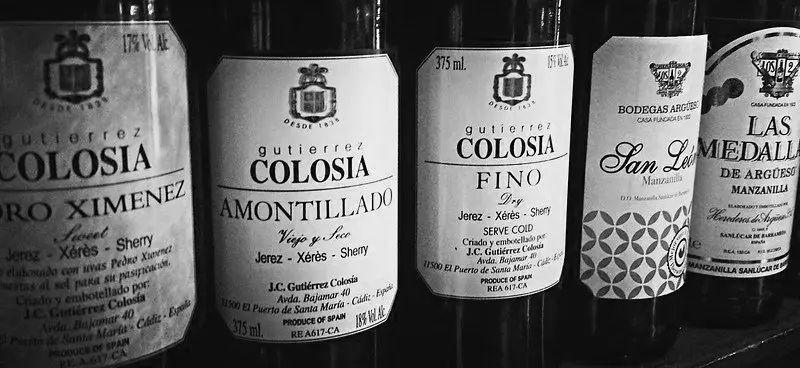
Setting aside the panoply of Sherries out there, dry Sherry comes in three essential styles. If you understand these foundational three, then you’ll know more than most and enough to find what you enjoy.
- Fino or Manzanilla: A light-bodied, biologically aged wine that’s pale lemon and intended for immediate drinking. These wines should be consumed within two years of bottling.
Jargon Alert: Biological aging means that the wine sits in a barrel with a film of yeast growing on top of it.
- Oloroso: A medium-bodied, deep brown wine that’s undergone extensive oxidative aging. These wines should be enjoyed when bottled but are fairly indestructible.
Jargon Alert: Oxidative aging means that the wine sits in a barrel filled up 85% with some air on top. This allows the wine to oxidize.
- Amontillado: A medium-bodied, golden amber wine that’s a cross between styles #1 and #2 (Fino and Oloroso).
Intuitively, it makes sense that if Amontillado is a combination of winemaking techniques, then it will automatically be something special – something above and beyond the other two.
How Do they Make Amontillado?
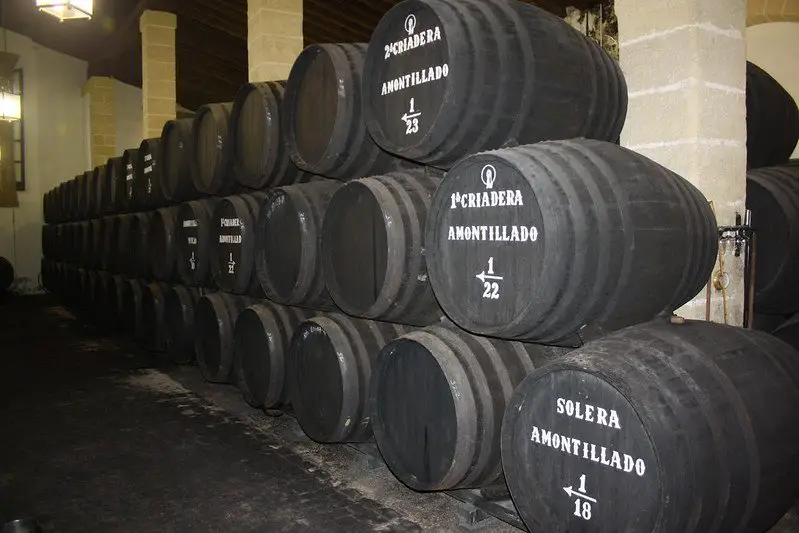
Amontillados can be crafted in two different ways:
- First, a traditional method that goes back hundreds of years.
- The second method is a more modern approach that blends different Sherry styles reducing production costs.
Making a Traditional Amontillado
All Sherry starts out life as a dry white wine. The winemakers select different tanks of wine for different Sherry styles based on things like acid and structure.
This is called the base wine.
Once the winemaker has the base wine, they start the process of biological aging.
How Does Biological Aging Work?
Base wines destined for Amontillados are around 13% ABV.
At this point, the winemaker will fortify the wine to around 15% ABV using a neutral, 95% ABV distilled spirit, and will move the new wine to old American oak barrels that already have older wine in them with yeast growing on top, called the flor, for biological aging.
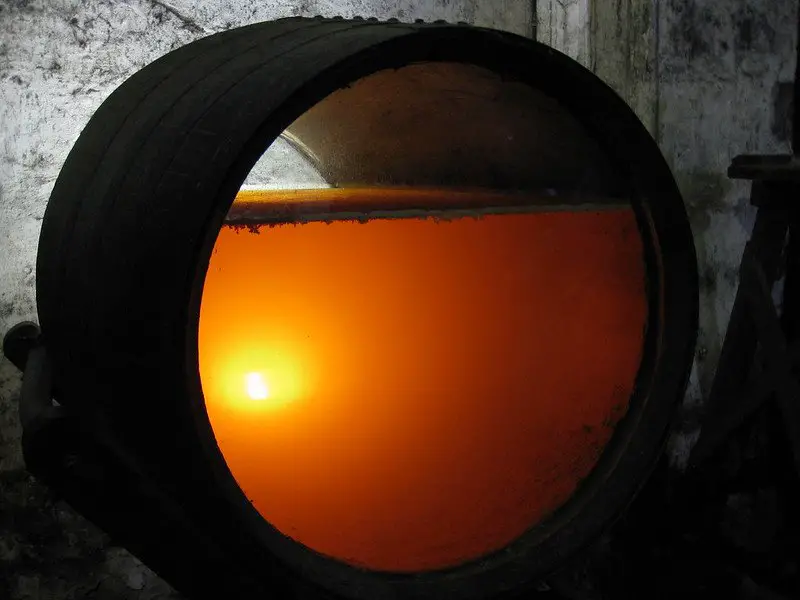
Jargon Alert: Flor is the technical term for the layer, or film, of yeast growing on top of Sherry. This is exactly like the film of yeast that grows on top of your old juice that you forget to throw away. Well, except the yeast are cultured and there’s a winemaker overseeing the process so it’s not so gross (just don’t look at the pictures if you’re squeamish about those sorts of things).
Once in the barrels, the flor yeast slowly consumes alcohol and glycerin, giving the wine a lighter body and a wincingly dry profile.
The flor also gives off acetaldehyde aromas, as well as biscuit and yeasty notes as the dead yeast breaks down at the bottom of the barrel.
Not everyone finds Sherries appealing, and the wines’ flavors are truly unique to their winemaking processes.
After a certain amount of time (determined by the winemaker), the Sherry destined for Amontillado is siphoned off of the flor, or the flor dies naturally, and they move the wine to old American oak barrels for extended oxidative aging.
Before that, however, the wine is re-fortified to around 16% -17% ABV.
These traditional Amontillados go through not one, but TWO fortifications.
This second fortification stabilizes the wine and ensures that no other microbes or yeast can grow in the wine, protecting it from developing off flavors.
Time for Step #2 in the process: Oxidative aging.
How Does Oxidative Sherry Aging Work?
Easy! Don’t fill your wine barrel all the way up to the top and allow some air in.
The oxygen reacts with the wine and changes the wine’s color, from pale lemon to an amber brown.
This is a similar chemical reaction as when you leave a sliced apple or raw potato out; they slowly turn color and brown.
Fun Experiment: If you’re curious about what oxidized wine tastes like, then you can re-creatze this process in your own home kitchen:
- Purchase a cheap bottle (1€/$3 USD) of white Pinot Grigio or basic white table wine.
- Pour yourself a glass or two (or pour half down the sink if you don’t want to drink it).
- Next, put a paper towel on top of the bottle and cinch it down with a rubber band (this will keep the flies away).
- Keep the wine on your counter or in a corner where no one will drink it for 4 weeks.
- Go back and pour yourself a glass.
- Note the color change and the change in the aromas (it will be more muted) and flavors (it will taste metallic and nutty).
Back to oxidatively aged Sherry –
In addition to the color change, the wine slowly takes on oxidative notes, mainly walnut, praline, varnish, leather, and strong coffee notes. But the wine is still dry.
Imagine non-sweet praline – the rich essence of the nut, but without the sugar – yum!
So Why Is Amontillado Special?
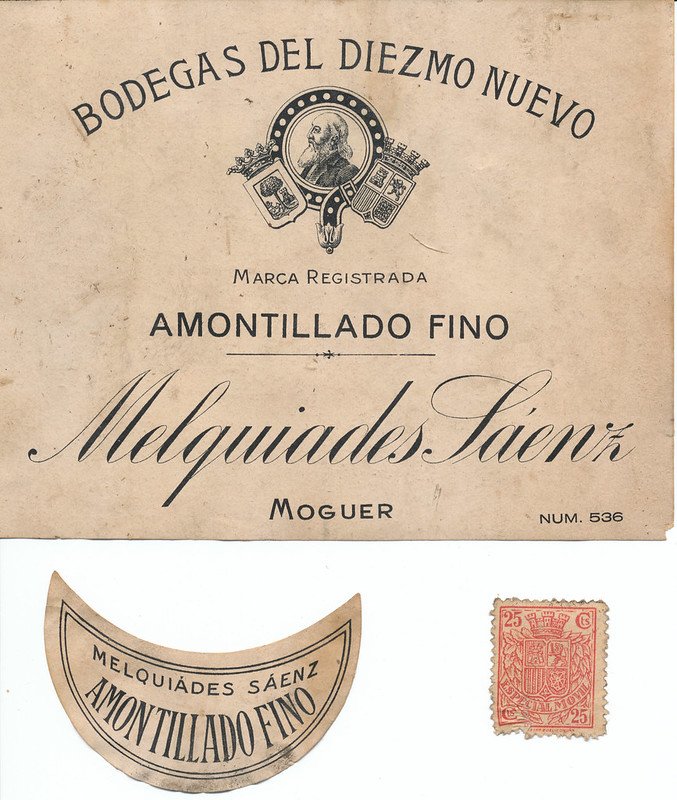
Amontillados are special wines because of this complicated, two-step maturation process.
First through biological aging and then through oxidative aging.
Monitoring the aging process under flor and then again maturing the wine for several more years while it goes through oxidative aging ties up inventory and increases production costs – not just with time, but also with monitoring the wine and making sure that it is aging as it needs to.
Most Amontiallados will be several years old by the time they reach you, the wine lover that you are!
Making a Modern Amontillado
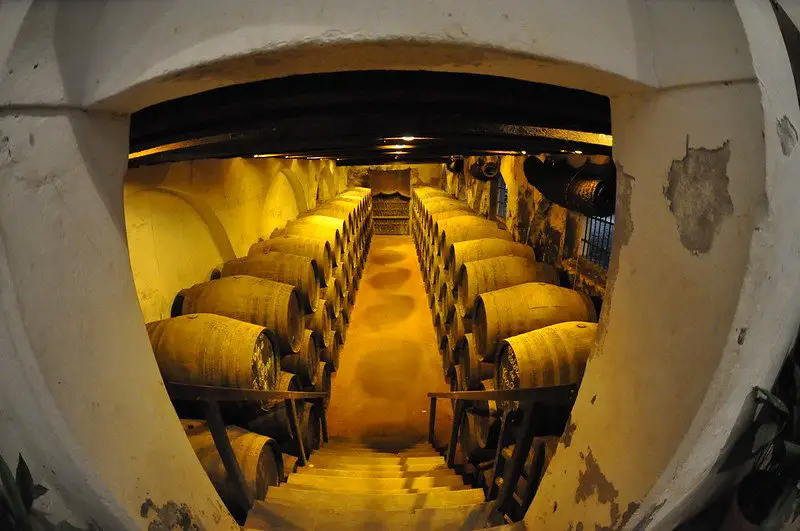
Given the rather cumbersome processes involved in traditional Amontillado – biological aging followed by oxidative aging – today’s producers opt to shortcut the process by together blending Fino Sherries (wines that have only gone through biological aging under flor) with Oloroso Sherries (wines that have only gone through oxidative aging).
Blending the Fino and Oloroso wines to make an Amontillado gives the winemaker the freedom and ability to capture the precise nature of each wine at the desired percentage.
Arguably, crafting Amontillados through a blending process allows for quality winemaking while reducing production costs.
What’s the Difference Between Amontillado and Fino Sherry?
| Characteristics | Fino Sherry | Amontillado Sherry |
|---|---|---|
| Appearance | Pale straw to pale gold | Amber to light brown |
| Aromas | Fresh, yeasty, almond, chamomile | Nutty, caramel, dried fruit |
| Sweetness | Very dry | Dry |
| Acid | Low | Low |
| Body | Light | Medium |
| Alcohol (%) | 15.5% | 17%% |
| Intensity | Delicate | Moderate to pronounced |
| Pairings | Seafood, tapas, almonds | Hard cheeses, grilled vegetables |
| Cost | $15-$30 | $20-$50 |
What Do You Pair with Amontillado Sherry?
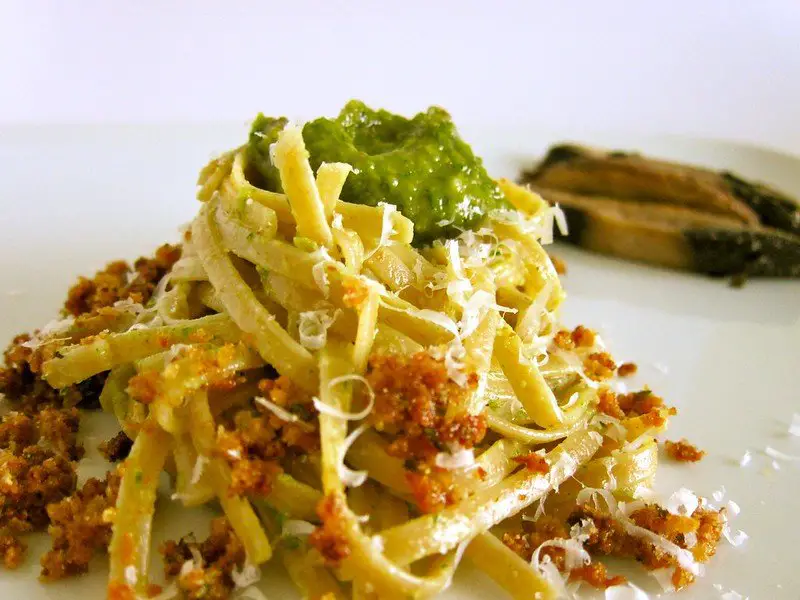
Amontillados have a strong flavor profile and high alcohol levels, so you’ll want to stay away from spicey foods that will compete for dominance in your mouth and potentially accentuate the burn of the alcohol.
Here’s a quick video on Amontillado Sherry Pairing Ideas

Pair Amontialldos with savory, earthy dishes. Here are some of my favorites:
- Cream-based pasta sauces
- Grilled cheese
- Salty snacks (chips/crisps)
- Pesto-based dishes
- Dark leafy salads with vinaigrettes
- Goat cheese (chèvre)
Helpful Tip: If you’re just getting started out with wine, I put together this helpful overview of food with wine pairing to get you started. Side note – I spend just as much time thinking about food with wine pairing as I do deciding what I’m going to eat every night. Utter hedonism. What can I say?
Thirsty for More?
Here’s the in-depth, comprehensive post on all-things Sherry, Sherry winemaking, and Sherry styles.
If you love Spanish wines, then check out this post of must-explore Spanish red wines. Get your tapas and your wine glasses ready!



